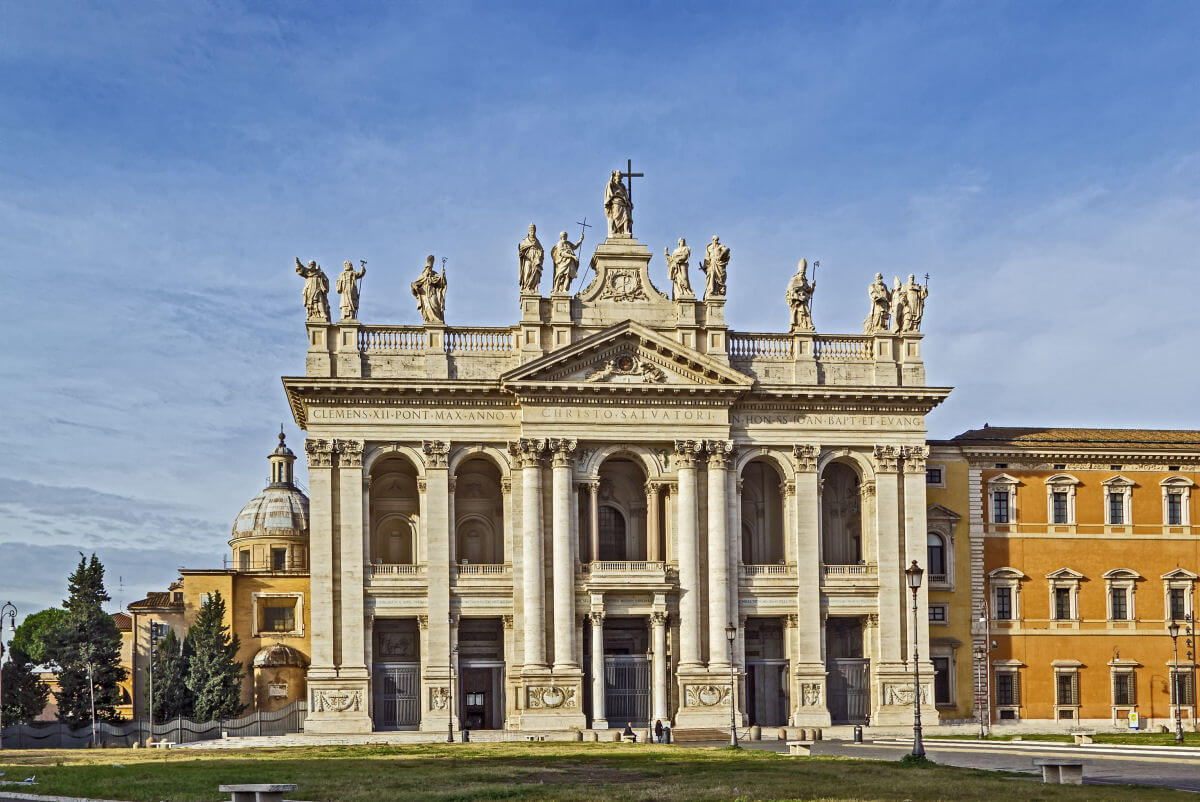
Introduction
The Basilica of St. John Lateran, or, to give it its full title in Italian, Arcibasilica del Santissimo Salvatore e dei Santi Giovanni Battista ed Evangelista in Laterano (which translates as "The Archbasilica Cathedral of the Most Holy Savior and of Saints John the Baptist and John the Evangelist in the Lateran"), also known as the Archbasilica of St. John Lateran, is the oldest and highest ranking of the four major basilicas in Rome. It is considered the "mother of all churches" in the city and is the official seat of the Bishop of Rome, also known as the Pope, although his official residence is in Vatican City.
The basilica stands on the site of a palace that belonged to the Roman patrician, Plautius Lateranus, who was the first known owner of the land. The palace was donated to the church by Emperor Constantine in the 4th century AD, and the current structure was built in the 18th century.
The palace is a complex of buildings, including the papal apartments, the Lateran Library, and the Pontifical Lateran University. The palace is also home to the Papal Lateran Palace Museum, which houses a collection of art and artifacts from the basilica and the palace.
History
The Origins of the Basilica
As stated above, the origins of the Basilica of St. John Lateran date back to the 4th century AD. According to tradition, the first church on the site was built by Emperor Constantine, who donated the palace of Plautius Lateranus to the church in AD 314. The church was originally dedicated to the Savior and was later dedicated to St. John the Baptist and St. John the Evangelist. The church served as the pope's official residence until the 14th century, when the papacy moved to the Vatican Palace.
Medieval and Renaissance Periods
During the medieval period, the Basilica of St. John Lateran was repeatedly damaged by fires and earthquakes. In the 12th century, Pope Innocent III ordered the reconstruction of the church, which was completed in the 13th century. The church underwent further renovations during the Renaissance period, when the facade was redesigned and the interior was decorated with frescoes and sculptures.
Baroque and Modern Periods
In the 17th century, Pope Sixtus V ordered the reconstruction of the basilica, which was finally completed in the 18th century by Pope Clement XII (his name with Roman numerals, CLEMENS XII, can be seen written at the top of the building). The new design, in the Baroque style, included a grand facade and a spacious nave. The facade was designed by Francesco Borromini, while the nave was designed by Alessandro Galilei.
In the 20th century, the Basilica of St. John Lateran underwent further renovations, including the restoration of the mosaics and frescoes. The most recent restoration took place in the 2000s, when the facade and the nave were cleaned and restored.
Architecture and Design
The Facade
The facade was designed by Francesco Borromini in the Baroque style. It is divided into three levels, with the central level featuring a large portal and a triangular pediment. The portal is decorated with sculptures of St. John the Baptist and St. John the Evangelist, while the pediment is decorated with a mosaic of the Lamb of God. Above the portal, there is a large window, flanked by two smaller windows, which are decorated with sculptures of angels. The facade is crowned by a bell tower, which was added in the 18th century.
The Nave
The nave of the basilica was designed by Alessandro Galilei. The nave is divided into three aisles, with the central aisle being the widest and tallest. The nave is decorated with frescoes and sculptures, including a cycle of frescoes by Giovanni Battista Parodi, which depict scenes from the life of St. John the Baptist. The nave is also home to the High Altar, which is decorated with a large painting of the Crucifixion.
Other Rome Tourist Attractions:



